How to collect and save seeds from your garden for free plants next summer
Make like the gardening pros and transform your outdoor space into a regenerative wonderland
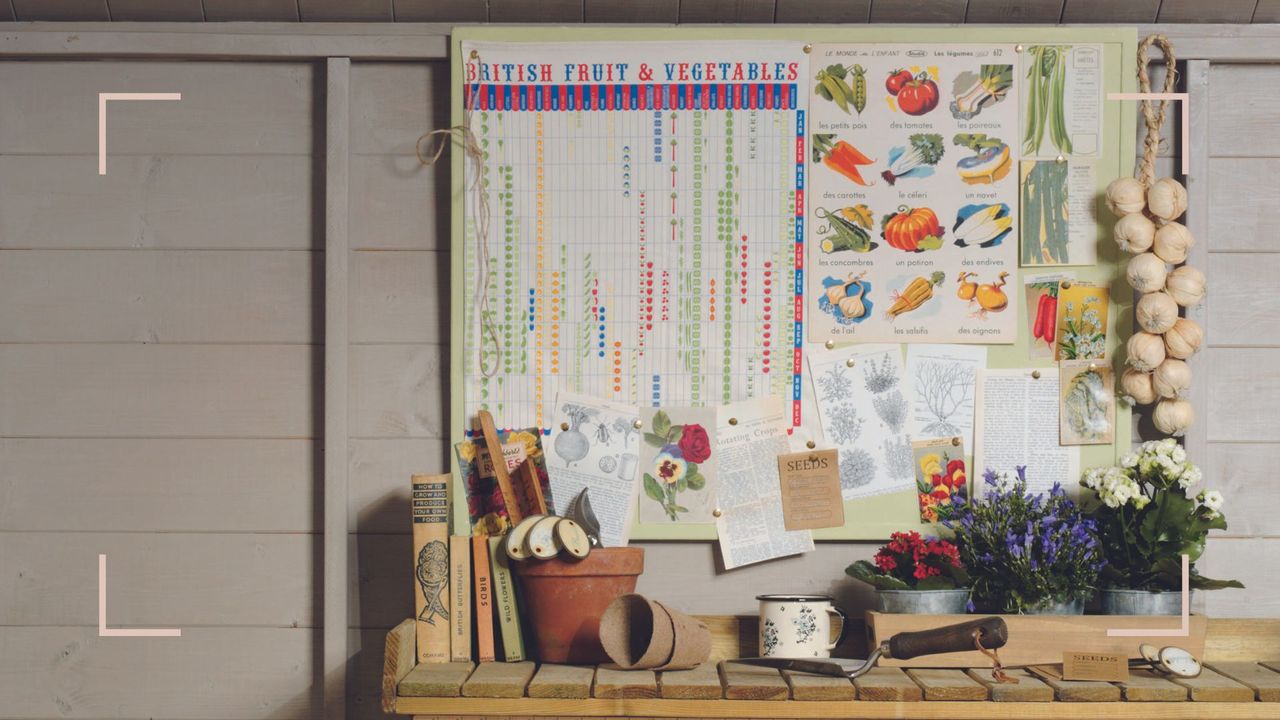

August is widely considered to be the best month for relaxing and enjoying your garden, but it's also the ideal time to learn how to collect and save seeds – especially if you want your garden to look its absolute best next year.
It's one of this year's biggest garden trends, and little wonder; learning how to collect and save seeds is, after all, one of the most sustainable garden ideas to fill up your outdoor space with the very best plants... without forking out a fortune for the privilege.
Thankfully, it's the sort of easy gardening tip that's quick to master, especially if you have our expert guide to hand. Throw in the fact that it'll make it incredibly simple to tackle succession planting in earnest, and you have more than enough reasons to get started...
How to collect seeds and save them for free planting next year
One of the best and easiest ways to transform your garden on a budget, growing plants from seed becomes all the thriftier if you put the effort in to collect those seeds yourself to benefit from plant propagation.
"It is an opportunity to increase the number of plants in your garden for free," say experts at the Royal Horticultural Society (RHS), "[especially as] seed can be saved from many trees, shrubs, perennials, aquatic plants, alpines, annuals, biennials, bulbous plants, ornamental grasses vegetables and herbs."
With that in mind, then...
What you will need
Unlike some gardening jobs, like learning how to prune roses, you won't need many tools to hand to collect and save seeds.
Sign up for the woman&home newsletter
Sign up to our free daily email for the latest royal and entertainment news, interesting opinion, expert advice on styling and beauty trends, and no-nonsense guides to the health and wellness questions you want answered.
In fact, all you really need to have to hand are:
- a pair of gardening gloves
- a few sheets of paper towel
- a selection of airtight containers, such as jars or sealed envelopes
- a pair of secateurs or strong scissors, like these Spear & Jackson Razorsharp Multi-Scissors from Amazon

RRP: £17.49 | With extra cushioning for comfort and a two-way stretch mesh between the fingers, these gardening gloves are as stylish as they are functional.
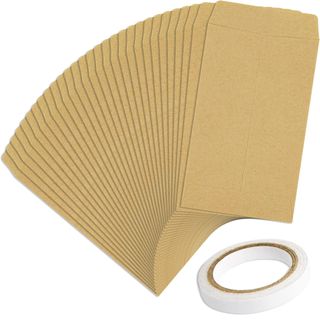
RRP: £4.96 | These handy envelopes are simple, durable, and easy to seal, making them the ideal place to stash your favourite seeds each winter.
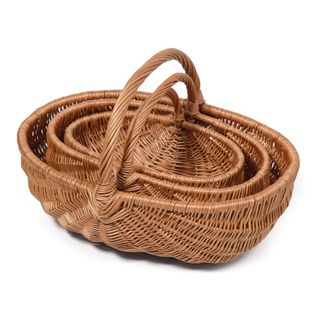
RRP: £29 | It's easier than ever to inject some cottagecore magic into your seed collecting adventures, thanks to this rustic wicker basket.
Step-by-step guide
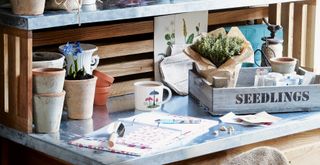
As mentioned already, it's surprisingly easy to learn how to collect and save seeds, so long as you wait for the right moment.
"Timing is one of the most important aspects of collecting seeds, as collecting too early or late can impact the seed," explains Morris Hankinson, director of Hopes Grove Nurseries.

Morris Hankinson is the founder and managing director of Hopes Grove Nurseries Ltd, the UK’s only specialist grower-retailer of hedging plants. He established the thriving business in 1992, shortly after graduating with a Commercial Horticulture Degree from Writtle College, Essex.
"Typically the best time to collect seed is around two months after flowering," he continues, noting that "seeds should be collected when they are dry and have begun turning brown or black, depending on the type".
And so, with that caveat in place, here's our expert advice on how to collect and save seeds like a gardening pro.
1. Select healthy plants
"The best way to gain results from collecting seeds is to choose robust plants," says Morris. Choose the most alluring plants in your garden to give young seedlings the most chance to thrive.
"With that in mind, be sure to select plants that are healthy and have the characteristics you want to pass on. And always avoid plants that show signs of disease or pest issues."
2. Harvest and dry the seeds
When it comes to learning how to collect and save seeds, the most important thing to remember is this; tailor your efforts to the plants themselves!
Pick the seedheads, either individually or with their stalks, and "lay them out to dry on a dry surface like a greenhouse bench or a warm windowsill," says Morris.
"This drying process makes it easier to extract the seeds from pods, cones, or capsules ."
- How to remove the seeds from pods or cones: "Gently shake or rub the seed heads to release the seeds. If the pods and capsules do not open when dry, gently crush them to release the seed," says Morris.
- How to remove the seeds from pods: "For plants like beans or peas, simply remove the seeds from the pods."
- How to collect seeds from fleshy fruits and berries: "Start by mashing them in a fine sieve and rinsing away the pulp in cold water. Let the seeds dry for a few days on paper towels.
- How to remove the seeds from exploding seedheads: "You need to check these every few days. Place a bag over them and shake; this typically causes the ripe seedheads to burst into the bag. Alternatively, remove the seedheads along with their stems as they turn brown and place them in a labelled paper bag."
3. Clean the seeds
If you want to learn how to collect and save seeds effectively it's important to know that cleaning your seeds is necessary if you want to avoid rotting and decay.
"To remove debris, use a sieve or your fingers to separate seeds from any remaining plant material, such as chaff or pulp," says Morris.
"Some seeds benefit from being washed to remove any pulp or sticky residue. After washing, make sure to dry them thoroughly to prevent mould."
4. Dry the seeds
When learning how to collect and save seeds, it's likely you will need to dry them, too (except in some rare cases; more on this later!).
"Place your seeds in a single layer on a paper towel, a tray, or a screen in a well-ventilated area," says Morris. "Avoid direct sunlight, as it can damage seeds, and allow the seeds to dry for at least a week."
Be sure to ensure they are completely dry before storing them to prevent mould and rot.
5. Store the seeds
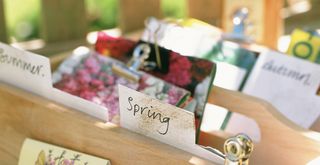
Any good gardening pro will tell you that "it’s important to use airtight containers like glass jars, plastic bags, or sealed envelopes" when learning how to collect and save seeds, as this will help to keep them dry.
"Excess humidity or warmth can cause seeds to deteriorate or die due to fungal disease or rot," says Morris. "So, label the containers with the plant name and the date of collection, and keep the seeds in a cool, dark place with low humidity like a cool cupboard or a fridge."
6. Test for viability
It's an optional step in our How To Collect And Save Seeds 101 Guide, but it's always a good idea to make sure the seeds you've collected are worth keeping.
"To check if your seeds are still viable, perform a germination test by placing a few seeds between damp paper towels and observing if they sprout," says Morris.
7. Maintain seed viability
Of course, it's not simply enough to collect and save seeds; you have to show them some love while they're in storage, too.
"Whilst your seeds are stored, you should monitor them for any signs of moisture or pests," says Morris.
"Most seeds remain viable for 1-2 years, but this can vary by plant type. Some seeds, like those of perennials, may last longer if stored properly."
FAQs
What is the best way to collect and store seeds?
Timing is everything when it comes to collecting and storing seeds; you will want to check and make sure they're ready to be harvested, and aim to do so on a dry day (you want them to be free of dew or moisture).
"Allow the seed pods or heads to fully mature on the plant. Seedheads can ripen rapidly, so it’s important to monitor them closely to collect the seeds before they scatter," says Morris Hankinson of Hopes Grove Nurseries.
"If seeds don’t look ready, check periodically to ensure seeds do not fall off prematurely. For some plants, you might need to wait until the pods or fruits have dried out completely. Bear in mind that fruit seeds like berries need to be collected before they are taken by birds!"
Once they're ready for harvesting, takr your pair of secateurs or scissors, collect your seeds, dry them thoroughly, and pop them in envelopes for storage. Don't forget to label them with the plant name and the date of collection, too.
How do you dry seeds for seed saving?
It's surprisingly easy to dry seeds for seed saving; simply scatter them across some paper towels, making sure to place them somewhere with low-humidity, good ventilation, and out of direct sunlight.
Once this is done, leave them for at least a week, to ensure they have dried thoroughly (the RHS says you can store yours "in a refrigerator at 5°C (41°F) until required").
"Certain seeds, such as those of walnuts, oaks, and magnolias, must not be allowed to dry out, as they will be unable to absorb the water needed for germination," adds Morris Hankinson of Hopes Grove Nurseries.
"These seeds can be stored for several months in a plastic bag filled with damp vermiculite, sand, or a mix of moist coir and sand."
The RHS adds that Store in a refrigerator at 5°C (41°F) until required. Most seed will remain viable in this way for many years
And just like that, you know how to collect and save seeds like an absolute pro. Put this knowledge to good use and we suspect your garden borders will be bursting at the seams come next growing season...

Kayleigh Dray is an experienced writer and editor within the world of digital journalism. She kicked off her career in magazines with Cosmopolitan as a news writer. Kayleigh then went on to become part of the digital editorial team at Closer, before a successful seven-year stint at Stylist, where she took command as the site’s editor and editor-at-large.
Nowadays, Kayleigh can be found freelancing for a myriad of titles including Woman & Home, along with a role at Ideal Home where she waxes lyrical about her true love: gardening. She is currently giving her own backyard a woodland-inspired makeover – and there have been whispers of a vegetable plot, too.
-
 Kelly Hoppen shares her interior expertise to refresh homes accordingly now it's spring
Kelly Hoppen shares her interior expertise to refresh homes accordingly now it's springIt is time to say goodbye to the winter blankets and welcome the new season into your home
By Emily Smith Published
-
 Did Brad Pitt produce Adolescence? His role in making the show revealed as viewers notice subtle detail
Did Brad Pitt produce Adolescence? His role in making the show revealed as viewers notice subtle detailThose tuning into Adolescence have been left wondering if the Hollywood legend played a part in producing the show
By Lucy Wigley Published